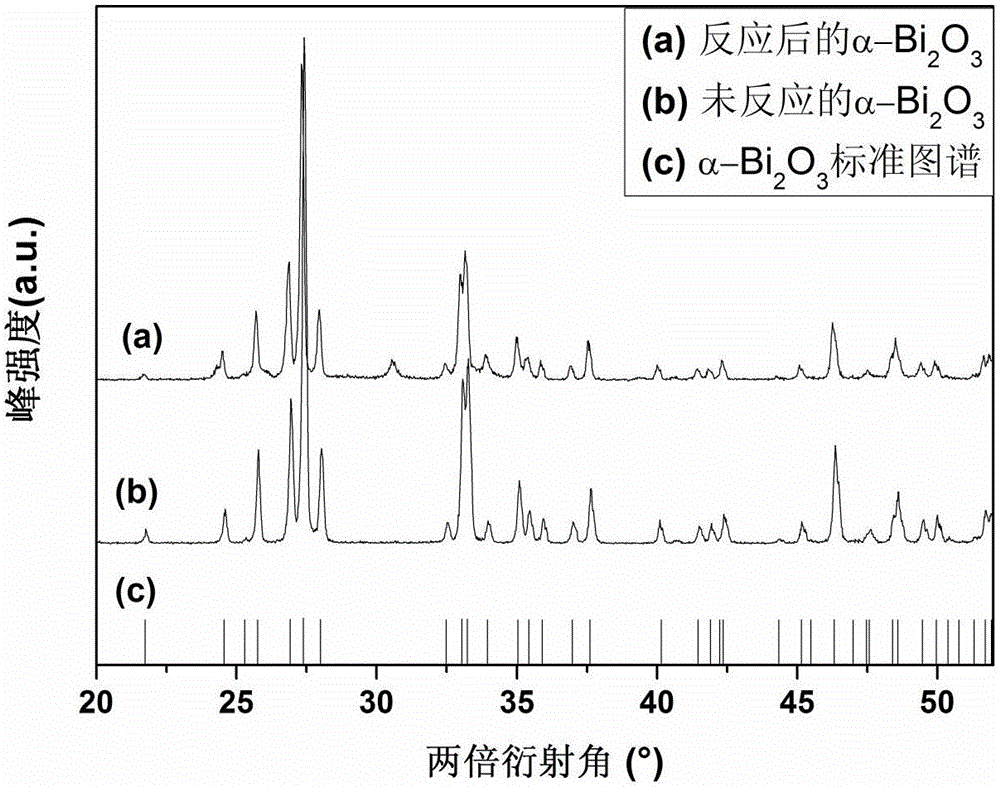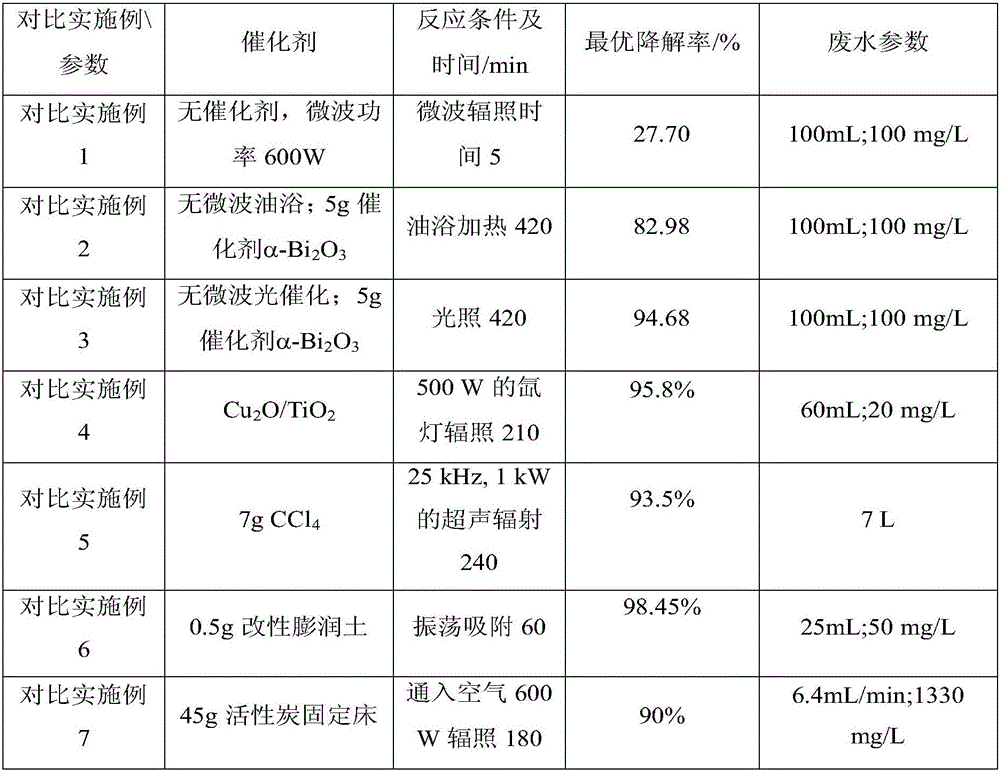Catalyst for microwave catalytic degradation of organic wastewater and organic wastewater treatment method
A technology of organic wastewater and microwave catalysis, applied in the direction of oxidized water/sewage treatment, water/sewage treatment, chemical instruments and methods, etc., can solve problems such as time-consuming, inability to degrade pollutants, and failure to meet actual needs, etc., to achieve process parameters Easy control, convenient control of irradiation parameters, and convenient industrial operation
- Summary
- Abstract
- Description
- Claims
- Application Information
AI Technical Summary
Problems solved by technology
Method used
Image
Examples
Embodiment 1
[0025] A treatment method for organic wastewater containing nitrophenol, first prepare a certain amount of catalyst, a microwave device, a UV spectrophotometer, a centrifuge and 100mL of organic wastewater containing nitrophenol concentration of 100mg / L .
[0026] The catalyst uses α-Bi 2 o 3 , the preparation method is as follows: after fully grinding bismuth nitrate, roasting at a temperature of 550°C for 5 hours, and then getting the catalyst α-Bi 2 o 3 .
[0027] Step A, mixing 0.1g of the catalyst with organic waste water to obtain a mixed material;
[0028] Step B, put the mixed material obtained in step A into microwave equipment, degrade it under microwave irradiation, and cool to room temperature to obtain the degraded waste liquid, wherein: the power of microwave irradiation is 600 watts, and the time of microwave irradiation for 5min.
[0029] The degraded waste liquid is centrifuged with a centrifuge to obtain the supernatant, and the absorbance of the supern...
Embodiment 2- Embodiment 12
[0037] Embodiment 2-Example 12 differs from Example 1 only in the parameters listed in Table 1, see Table 1 for details, and Example 2-Example 12 is checked by the same detection method as Example 1, and the results are detailed See Table 1.
[0038] Embodiment 1-embodiment 5 is the impact of different catalyst dosages on microwave catalytic treatment of organic waste water, as can be seen from Table 1, when the consumption of catalyst increases from 3g to 7g (treatment contains the organic waste water 100mL of nitrophenol concentration of 100mg / L) , the degradation rate increased from 98.0% to 99.2%. When the amount of catalyst continued to increase, the degradation rate did not increase significantly. The main reason is that a certain microwave quantum density (ie power) can only excite a certain amount of microwave catalyst to generate electron space. hole pairs, so that only a certain amount of pollutants can be degraded. From the consideration of saving cost, the catalys...
Embodiment 3
[0039] Embodiment 3 in conjunction with embodiment 6-embodiment 8 investigated the influence of microwave irradiation time on microwave catalytic treatment of organic wastewater, as can be seen from Table 1, when microwave irradiation time is extended to 7 minutes by 5 minutes, its degradation rate changes little , can be ignored, the main reason for the decrease in the data here may be that the condensed and refluxed reaction solution was not completely refluxed into the reaction system during the 7min reaction, resulting in an increase in the concentration of the reaction system; it may also be a measurement error.
[0040]Embodiment 3 in conjunction with embodiment 9-embodiment 11 investigated the influence of microwave irradiation power on microwave catalytic treatment of organic wastewater, as can be seen from Table 1, 600W and 800W are high power, when other conditions are appropriate, all can reach greater degradation rate, but the difference is not very large. When the...
PUM
 Login to View More
Login to View More Abstract
Description
Claims
Application Information
 Login to View More
Login to View More - R&D
- Intellectual Property
- Life Sciences
- Materials
- Tech Scout
- Unparalleled Data Quality
- Higher Quality Content
- 60% Fewer Hallucinations
Browse by: Latest US Patents, China's latest patents, Technical Efficacy Thesaurus, Application Domain, Technology Topic, Popular Technical Reports.
© 2025 PatSnap. All rights reserved.Legal|Privacy policy|Modern Slavery Act Transparency Statement|Sitemap|About US| Contact US: help@patsnap.com



